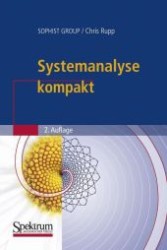Full Description
Bridging the gap between education theory and the delivery of excellent teaching, A Practical Guide for Medical and Health Professions Teachers, 7th Edition, provides accessible, highly readable, and practical information for those involved in basic science, clinical practice, and education in all the health professions. Highly regarded in these fields, this text offers valuable insights from global contributors who provide an international perspective as well as a multi-professional approach to topics relevant to all healthcare teachers. This fully revised edition provides timely updates on recent growth areas-from artificial intelligence, to the evolution of precision learning, to cultural awareness. It remains one of the foremost guides from top educationalists in the field.
Emphasizes the importance of developing educational skills in the delivery of enthusiastic and effective teaching
Offers comprehensive, succinct sections on curriculum development, learning situations and strategies, curriculum themes, assessment, student engagement, and more
Includes new content on artificial intelligence, public health medicine, social accountability, cultural awareness, student well-being and mindfulness, cost and sustainability in medical education, learning analytics, precision learning, peer-assisted learning, and professional identity, to highlight some
Features an expanded section, "Patients," that stresses the importance of the patients as a partners in education and assessment
Helpful boxes highlight practical tips, quotes, and trends seen in today's approach to education
Delivers the knowledge and expertise of more than 60 new authors and some 130 contributors from 27 countries, providing representation across the health professions
An eBook version is included with purchase. The eBook allows you to access all of the text, figures, and references, with the ability to search, make notes and highlights, and have content read aloud
Contents
SECTION 1 CURRICULUM DEVELOPMENT
1. The Medical School of the Future
2. Curriculum Planning and Development
3. The Undergraduate Curriculum
4. Postgraduate Medical Education: A 'Pipeline' to Competence
5. Continuing Professional Development
6. The Hidden Curriculum
7. The International Dimension of Medical Education
SECTION 2 LEARNING SITUATIONS
8. How Students Learn
9. Lectures
10. Learning in Small Groups
11. Clinical Teaching
12. Learning in Urban and Rural Communities
13. Learning in Longitudinal Integrated Clerkships
14. Learning in a Simulated Environment
15. Independent Learning and Distance Education
SECTION 3 EDUCATIONAL STRATEGIES AND TECHNOLOGIES
16. Outcome-based Education
17. Integrated Learning
18. Interprofessional Education
19. Problem-Based Learning
20. Team-Based Learning
21. Digital Technologies in Medical Education
SECTION 4 CURRICULUM THEMES
22. Relevance of Foundational Sciences to the Curriculum
23. Social and Behavioural Sciences in Medical School Curricula
24. Clinical Communication Skills
25. Ethics, Empathy and Attitudes
26. Professionalism
27. Medical Research (in General) and Evidence-Based Medicine
28. Patient Safety and Quality of Care
29. Medical Humanities
30. Integrative Medicine in the Training of Physicians
31. Clinical Reasoning
32. Medical Education in an Era of Ubiquitous Information
SECTION 5 ASSESSMENT
33. Concepts in Assessment Including Standard Setting
34. Written Assessments
35. Performance and Workplace Assessment
36. Portfolios, Projects and Theses
37. Feedback, Reflection and Coaching: Tools for Continuous Learning
38. The Assessment of Attitudes and Professionalism
39. Programmatic Assessment
SECTION 6 STAFF
40. The Roles of the Medical Teacher
41. The Teacher as a Scholar
42. Staff Development
43. Mentoring
44. Burnout, Mistreatment and Stress
SECTION 7 STUDENTS & TRAINEES
46. Selection of Students and Trainees
47. Students and Trainees in Need of Additional Support
48. Student Engagement in the Educational Programme
49. Professional Identity and Career Choice
SECTION 8 PATIENTS
50. The Patient as Educator
52. Patient as Curriculum developer
SECTION 9 MEDICAL SCHOOL
50. Curriculum and Teacher Evaluation
51. Medical Education Leadership
52. The Medical Teacher and Social Accountability
53. The Educational Environment
54. Medical Education Research
55. Diversity, Equality and Individuality








